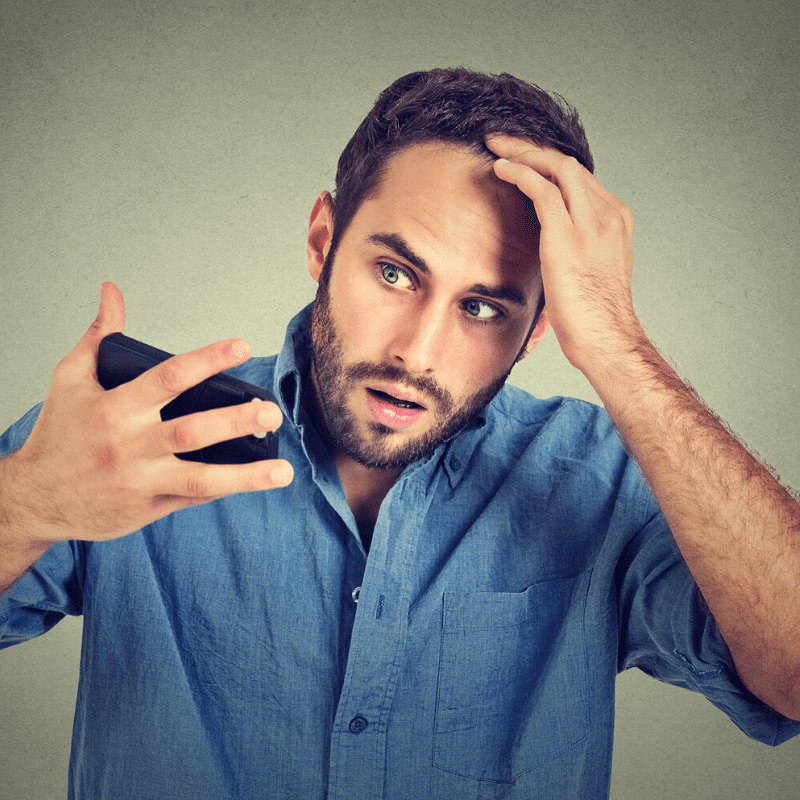
Let’s face it, hair is one of the most treasured aspects of our physical appearances. The first signs of hair thinning or loss are always alarming. Hair thinning, also known as alopecia, can arrive as early as our teens or early 20s. However, if you are fortunate, this process might not take place until later in life.
In truth, hair thinning can be caused by anything. It can be the usage of chemicals on your hair, hormonal changes, aging, or even due to genetics. Of course, hair thinning may be especially annoying as it can cause insecurities about our appearances and can be difficult to know how to treat.
Here are a few of the most common myths surrounding hair thinning or loss and how accurate they are
1. Maternal Inheritance
Nope – It’s not fair to blame your mom’s dad for hair loss. That’s because thinning hair is too complex to be determined by only one gene. During the cell division and replication process of meiosis, the genes are crossed and mixed. Therefore, either one of your parents could have had the gene for thinning hair.
Additionally, the gene for thinning hair is known for skipping generations and is completely random in choosing offspring and how it affects the individual is also unpredictable. However, the gene may not always show up in offspring and therefore, environmental factors also have a part to play.
2. Caused by Wearing Hats
Possibly – There is some truth to this myth. Wearing tight hats excessively can cause a form of baldness called friction alopecia. This form of alopecia is caused by the breakage of hair follicles. You can often view temporary thin or bald spots on your head. Keep in mind that friction alopecia is typically reversible and the hair will grow back with discontinued use of hats.
3. Only Men Suffer from Hair Loss
Not true – While we often think hair thinning or loss only affects men, women can also experience and struggle with it. According to research, androgenetic alopecia is a genetic condition that causes 95% of men experiencing alopecia to go bald. In less severe cases, men may only lose a small percentage of their hair.
Women also experience this, but not to a large extent. They have more ways to camouflage alopecia because they most likely have more hair than men.
4. Only Older People Have Hair Loss
Wrong – As mentioned previously, alopecia can begin as early as teens and early 20s. Oftentimes, hair thinning or loss at a young age can be traumatizing or create insecurities that feel overwhelming.
5. Caused by Shampoo
No – If shampoo causes hair thinning or loss, it would not be so widely used. It is very unlikely that shampoo is to blame for your hair loss. Its sole purpose is to remove dirt and oils from your hair; it cleanses your pores and hair follicles, removing any bacteria.
Using shampoo also encourages blood flow which can result in healthier hair follicles. In all, shampoo should be used because it has countless benefits for your hair.
6. High Testosterone
Not exactly – First, it’s important to clarify that testosterone exists in the body in various forms. One of them, Dihydrotestosterone (DHT), is found primarily in the prostate, skin and hair follicles. However, it’s not the amount of testosterone or DHT that causes hair loss. Rather, it’s the sensitivity of your hair follicles, which is genetic. Even if you have low levels of testosterone, yet high levels of DHT, you have the potential to have alopecia.
However, thinning body and facial hair is one of the more common signs of low testosterone and if you’ve found that your hair is thinning or that you’re losing body hair, you may want to check with a doctor.
7. Alopecia is Permanent
Sometimes – If alopecia was permanent, most of the world’s population would be bald. Hair loss can be either temporary or permanent. The truth of the matter is that while there is no definite cure for alopecia, there are several ways to treat it.
Possible Solutions
Whether your alopecia is temporary or chronic, there are treatments readily available. If you would like to implement treatment into your daily life, you can ask your doctor for a prescribed medication. It often comes in the form of shampoos with directions for daily use.
If you would like more professional treatment, consider undergoing PRP (Platelet-Rich Plasma) hair restoration. During this process, you have blood drawn and separated into blood and plasma, which is then injected into your scalp. This injection heals bodily tissues and encourages the regrowth of hair follicles. People who have undergone this procedure have seen results in a few months. This solution is not permanent, however, and requires touch-ups.
Hair transplants offer a more permanent solution, at a higher cost and with more downtime. This domestic surgery involves moving any hair that you already have to a region on your head with less hair. This can cover bald spots and create a full head of hair. This method has a higher success rate than the previous ones and will require less treatment.
Balding can be frustrating and impact your daily life. You may try every available method, from old remedies to modern medicine, with the hope of restoring your once, full head of hair. Take heart though as there are plenty of ways to restore your hair and you are definitely not alone!